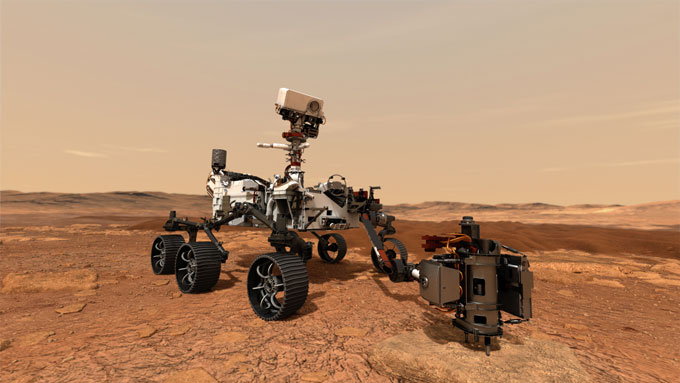The Perseverance rover caps off a month of Mars launches
Three spacecraft from three countries are now on their way to the Red Planet

NASA’s Perseverance rover launched aboard an Atlas V rocket from Cape Canaveral, Fla., on July 30 and is on its way to Mars — the third launch to the Red Planet this month.
Joel Kowsky/NASA
NASA’s Perseverance rover took off at 7:50 a.m. EDT on July 30 from Cape Canaveral, Fla., and is now on its way to Mars with a suite of instruments designed to search for ancient life. The launch is the third this month of spacecraft en route to the Red Planet.
This is the 22nd spacecraft NASA has aimed at Mars (16 of those missions were successful). But Perseverance will be the first mission to cache rock samples from the Red Planet for a future mission to bring back to Earth.
It will also be the first NASA mission in more than 40 years to directly search for life on Mars. The rover will land in a region called Jezero crater (SN: 7/28/20). That crater was once an ancient lake bed, and scientists think its rocks and sediments could preserve signs of life, if life was ever there (SN: 7/29/20). The spacecraft will take video and audio recordings of its own landing as it touches down — another first for a NASA Mars mission.
“This mission has more cameras on it than any we’ve ever sent before,” said Lori Glaze, director of NASA’s Planetary Science Division, on July 30 during a news conference. “It’s going to feel like we’re actually there, riding along with Perseverance on the way down.”

Mars launches tend to come in clumps thanks to Mars’ and Earth’s orbits. The planets line up on the same side of the sun every two years, so scientists have narrow windows to launch for the most efficient trip. All three of this year’s missions will arrive in February 2021.
The other missions launched in July represent firsts for their respective countries. The United Arab Emirates’ first interplanetary mission, which carries an orbiter called the Hope Probe, launched from Japan on July 19. Hope will measure Mars’ weather, from daily temperature changes to the significance of dust in the planet’s atmosphere (SN: 7/14/20).
Next up was China’s first Mars mission, Tianwen-1, which means “questions to heaven” and launched on July 23. China has previously sent spacecraft to orbit and land on the moon (SN: 1/3/19). And it is the first nation to send an orbiter, lander and rover all at once on its first attempt to reach Mars. “No planetary missions have ever been implemented in this way,” mission scientists wrote July 13 in Nature Astronomy. “If successful, it would signify a major technical breakthrough.”
Tianwen-1’s lander and rover will touch down in Utopia Planitia in April 2021. Instruments on the rover and lander will test Mars’ soil composition and magnetic and gravitational fields and will probe Mars’ interior.
Utopia Planitia is the same region where the first long-lived Mars lander, NASA’s Viking 1, touched down in 1976 (SN: 7/20/16). Viking was the first spacecraft to search for life on Mars, but its results were inconclusive. Perhaps with the rush of spacecraft this year, and the plans to bring red rocks home, scientists will finally learn whether Mars ever did — or does — host alien life.







